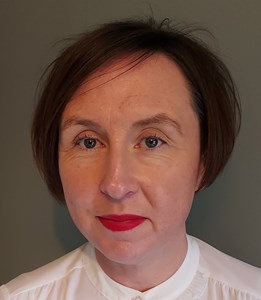Inequality in health and care is a significant issue that affects us all.
At NICE, we define health inequalities as unfair and avoidable differences in health across the population and between different groups of society. The impact of these differences is profound – not only affecting a person’s physical and mental health, but also limiting a person or group’s prospects in life.
There is an economic impact too, with estimates suggesting health inequalities cost the NHS an extra £4.8 billion a year, and society around £31 billion in lost productivity.
Before joining NICE, I was directory of strategy at Liverpool University Hospitals NHS Foundation Trust. It was a role I was privileged to hold; helping to join up and translate health and care transformation at an NHS provider, place and system level.
Working in Liverpool, I got to see first-hand the profound and lasting impact of health inequalities, which were exacerbated by the COVID-19 pandemic.
The health of people across the region is considerably below the rest of England on average. It’s reflected in lower life expectancy, higher obesity rates in children, and higher than average mortality rates in people under 75.
The scale and complexity of poor population health has a profound impact upon the system; impacting access to health and care services for people and demand management for health and care providers.
My observations in Liverpool are sadly all too common across the country and the impact of health inequalities is significant.
Addressing health inequalities: part of NICE’s core principles
I joined NICE last year as director of implementation and partnerships, aware that reducing health inequalities is part of NICE’s core principles.
NICE guidance underpins national and regional strategies that improve overall population health, considering where there is particular benefit to the most disadvantaged.
We have also delivered a focussed programme of work on health inequalities, which is now entering its third year. This programme makes sure health inequalities are considered and embedded in our work and guidance. Maintaining this focus, ensures NICE is enabling the health and care system to reduce health inequalities, where it will have the greatest impact.
First practical web resource on health inequalities
Through this work, NICE recently developed a practical web resource that - for the first time - maps all its guidance and advice to existing health inequalities frameworks.
This interactive resource lets you see all our relevant guidance and advice aligned to initiatives such as the NHS’s Core20PLUS5 and the adapted Labonte model. Aimed at practitioners and commissioners, the resource is a one-stop-shop of evidence-based recommendations aligned to established health inequalities frameworks.
New update - Core20PLUS5 for children and young people
The resource was really well received on its launch in October 2022. Many users commented on the depth and breadth of information offered. However, some also commented that the resource needed more guidance specifically relevant to children and young people.
We had planned to address children and young people in a second phase of work. However, based on this user feedback, we brought forward this update, by mapping our guidance with the six policy objectives set in the Marmot Review. This review, originally published in 2010 and recently revisited, was an independently produced report proposing effective evidence-based strategies for reducing health inequalities from birth onwards.
So, this week, I’m pleased to announce that we have launched a further significant update, which maps our guidance to the new Core20PLUS5 model for children and young people.
Core20PLUS5 is a national NHS England approach to inform action to reduce healthcare inequalities at both national and system level. The approach defines a target population – the ‘Core20PLUS’ – and identifies ‘5’ clinical areas of focus requiring accelerated improvement.
Our updated web resource maps NICE guidance to the NHS’ five areas of clinical focus, where care can be improved for children and young people:
- Asthma
- Diabetes
- Epilepsy
- Oral health
- Mental health
We’ve also included case studies of where other organisations have put our guidance into practice under each of these areas.
Help us continually improve our web resource
We know colleagues working in health and care are looking for help and resources to tackle the enormous challenge of health inequalities. The fact that nearly 10,000 visitors engaged with our resource within the first month highlights this. But we also know that the health and care landscape is evolving at an unprecedented rate, meaning that the resources and support we can provide may need to change.
So, we would appreciate any feedback you might have on this updated resource. This will help us make improvements, to make sure we’re delivering tools which are useful and usable. Ultimately, NICE is part of the jigsaw of people and partners working together to drive equity in health and care.
Find out more
Visit our health inequalities web resource.
For, feedback, comments or further information on our guidance and health inequalities please email healthinequalities@nice.org.uk

Blog comments
There are no comments